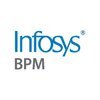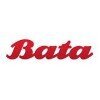Filter interviews by
Red Tape Accounts & Audit Executive Interview Questions and Answers
Red Tape Accounts & Audit Executive Interview Experiences
1 interview found
I applied via Recruitment Consulltant and was interviewed in Nov 2024. There was 1 interview round.
(2 Questions)
- Q1. What is e-commerce
- Ans.
E-commerce refers to buying and selling goods or services over the internet.
E-commerce allows businesses to reach a global audience
Transactions are conducted electronically
Examples include Amazon, eBay, and Alibaba
- Q2. How to analys return.
- Ans.
Returns can be analyzed by calculating the percentage increase or decrease in investment over a specific period of time.
Calculate the percentage return by dividing the difference between the final value and initial value by the initial value, then multiply by 100.
Compare the return to a benchmark or industry average to assess performance.
Consider the risk associated with the investment when analyzing returns.
Use financ...
Top trending discussions






Interview questions from similar companies

I applied via LinkedIn and was interviewed in Aug 2024. There were 2 interview rounds.
(4 Questions)
- Q1. Tell me about yourself
- Ans.
Experienced internal auditor with a strong background in risk management and compliance.
Over 5 years of experience in internal auditing
Skilled in risk assessment and compliance monitoring
Led successful audits resulting in cost savings for the company
- Q2. Experience related questions
- Q3. Revenue recognition questions?
- Q4. Aptitude related questions
(4 Questions)
- Q1. Tell me about yourself
- Ans.
Experienced internal auditor with a strong background in risk management and compliance.
Over 5 years of experience in internal auditing
Skilled in risk assessment and mitigation
Strong knowledge of compliance regulations
Led successful audits for major clients
Certified Internal Auditor (CIA)
- Q2. Questions on Audit Tools? Use of Power BI & Audit Board
- Q3. Case Studies related to P2P, Call Center Data Outsourcing Risk & Governance, Logical & Physical Access Controls?
- Q4. How will you perform an audit of a bank where credit card department has not reported any revenue leakage ? how will you test the controls?
- Ans.
I would conduct a thorough review of the credit card department's processes, controls, and documentation to identify any potential revenue leakage.
Review the credit card department's policies and procedures to understand how revenue is recorded and reported
Analyze transaction data to identify any anomalies or discrepancies that could indicate revenue leakage
Conduct interviews with staff members to gain insights into th...

Auditor Interview Questions & Answers
EY Global Delivery Services ( EY GDS)posted on 29 Oct 2024
I applied via Approached by Company and was interviewed in Sep 2024. There was 1 interview round.
(8 Questions)
- Q1. Explain depreciation and Amortization
- Ans.
Depreciation is the allocation of the cost of tangible assets over their useful life, while amortization is the allocation of the cost of intangible assets over their useful life.
Depreciation is used for tangible assets like buildings, machinery, vehicles, etc.
Amortization is used for intangible assets like patents, copyrights, trademarks, etc.
Both depreciation and amortization help in spreading out the cost of an asse...
- Q2. What is auditing why do we do it
- Ans.
Auditing is the process of examining financial records to ensure accuracy and compliance with laws and regulations.
Auditing helps to detect and prevent fraud and errors in financial statements.
It provides assurance to stakeholders that the financial information is reliable.
Auditing is required by law for publicly traded companies to protect investors.
It helps improve internal controls and operational efficiency.
Auditor...
- Q3. What is professional scepticism
- Ans.
Professional scepticism is the attitude of doubting and questioning information, evidence, and assumptions in auditing to ensure objectivity and thoroughness.
Professional scepticism involves maintaining a questioning mindset throughout the audit process.
Auditors should not automatically accept information provided by the client, but instead critically evaluate and verify it.
It is essential for auditors to remain indepe...
- Q4. Contents of financial Statements
- Ans.
Financial statements include balance sheet, income statement, cash flow statement, and statement of changes in equity.
Balance sheet shows assets, liabilities, and equity at a specific point in time.
Income statement shows revenues, expenses, and net income over a period of time.
Cash flow statement shows cash inflows and outflows from operating, investing, and financing activities.
Statement of changes in equity shows cha...
- Q5. What are the responsibility of the Auditor
- Ans.
The responsibilities of an Auditor include examining financial records, ensuring compliance with laws and regulations, and providing accurate and unbiased reports.
Examining financial records to ensure accuracy and compliance
Ensuring compliance with laws and regulations
Providing accurate and unbiased reports to stakeholders
Identifying and reporting any discrepancies or fraud
Communicating findings and recommendations to
- Q6. What is cash flow statement
- Ans.
Cash flow statement is a financial report that shows the inflows and outflows of cash in a business over a specific period of time.
It provides insights into a company's liquidity and ability to meet its financial obligations.
Consists of three main sections: operating activities, investing activities, and financing activities.
Helps investors and analysts assess the financial health of a company.
Example: Cash flow from o...
- Q7. What are the reconciling items in BRS
- Ans.
Reconciling items in a Bank Reconciliation Statement (BRS) are differences between the bank statement and the company's records.
Outstanding checks: Checks issued by the company but not yet presented for payment by the recipient.
Deposits in transit: Cash or checks received by the company but not yet recorded by the bank.
Bank errors: Mistakes made by the bank in recording transactions.
Interest earned: Interest income ear...
- Q8. What are the rules for debit and credit
- Ans.
Debits and credits are used in double-entry accounting to record financial transactions.
Debits increase assets and expenses, and decrease liabilities and revenues.
Credits increase liabilities and revenues, and decrease assets and expenses.
Debits are recorded on the left side of an account, while credits are recorded on the right side.
The accounting equation must always balance, with total debits equaling total credits.
Interview Preparation Tips

I was interviewed in Nov 2024.
It was good and easy also
(1 Question)
- Q1. Golden rules of Accounting
- Ans.
The golden rules of accounting are basic principles that guide the process of recording financial transactions.
The golden rules include: Debit what comes in, Credit what goes out; Debit the receiver, Credit the giver; Debit expenses and losses, Credit income and gains.
These rules help ensure that financial transactions are accurately recorded and classified in the accounting system.
For example, when a company receives ...

I applied via Referral and was interviewed in Jun 2023. There were 3 interview rounds.

Relevent technology and knowledge discussion
(1 Question)
- Q1. About organisation and ctc


Pan card, adharcard, mentioned crm portal details macth
Ms excel question? VI lookup Hlookup
Interview Preparation Tips

Interview Questionnaire
1 Question
- Q1. What is the Risk based method of Audit
- Ans.
Risk based method of audit is an approach that focuses on identifying and assessing risks to prioritize audit activities.
Identifies and assesses risks to prioritize audit activities
Evaluates the likelihood and impact of risks
Determines the level of assurance required for each risk
Tailors audit procedures to address identified risks
Examples: financial statement audits, IT audits, operational audits
Interview Preparation Tips

Interview Questionnaire
2 Questions
- Q1. Should have excellent analytical ability
- Q2. Play the role of a lead

Audit Associate Interview Questions & Answers
EY Global Delivery Services ( EY GDS)posted on 29 Dec 2024
I applied via Job Fair
Basic accounting ,english and logical reasoning
(2 Questions)
- Q1. What is audit procedure
- Q2. SA 600
(1 Question)
- Q1. Why would you like to join this organisation

(2 Questions)
- Q1. Types of audit risks
- Ans.
Audit risks include inherent risk, control risk, and detection risk.
Inherent risk: risk of material misstatement without considering internal controls
Control risk: risk that internal controls will not prevent or detect material misstatements
Detection risk: risk that audit procedures will not detect material misstatements
Examples: Inherent risk - complexity of transactions, Control risk - ineffective segregation of duti
- Q2. What is materiality and PM?
- Ans.
Materiality and PM refer to the concept of significance in auditing, with materiality being the threshold for financial information to be considered important and PM being the performance materiality set below materiality.
Materiality is the threshold at which financial information becomes significant enough to influence the decisions of users of the financial statements.
Performance materiality (PM) is set below materia...
(1 Question)
- Q1. Bank procedures
Red Tape Interview FAQs
Tell us how to improve this page.
Red Tape Interviews By Designations
- Red Tape Store Manager Interview Questions
- Red Tape Accounts & Audit Executive Interview Questions
- Red Tape Content Writer Interview Questions
- Red Tape Dispatch Executive Interview Questions
- Red Tape Executive Accountant Interview Questions
- Red Tape Marketing Intern Interview Questions
- Red Tape Project Coordinator Interview Questions
- Red Tape Stores Sales Manager Interview Questions
- Show more
Interview Questions for Popular Designations
Red Tape Accounts & Audit Executive Interview Process
based on 1 interview
Interview experience
Interview Questions from Similar Companies
|
Store Manager
95
salaries
| ₹2.4 L/yr - ₹5.5 L/yr |
|
MIS Executive
30
salaries
| ₹2 L/yr - ₹4.5 L/yr |
|
Area Sales Manager
28
salaries
| ₹4.2 L/yr - ₹8.5 L/yr |
|
Sales Executive
23
salaries
| ₹1.2 L/yr - ₹2.4 L/yr |
|
Salesman
20
salaries
| ₹1 L/yr - ₹3.5 L/yr |

Woodland

Bata

Reliance Retail

Aditya Birla Fashion and Retail
- Home >
- Interviews >
- Red Tape Interview Questions >
- Red Tape Accounts & Audit Executive Interview Questions










